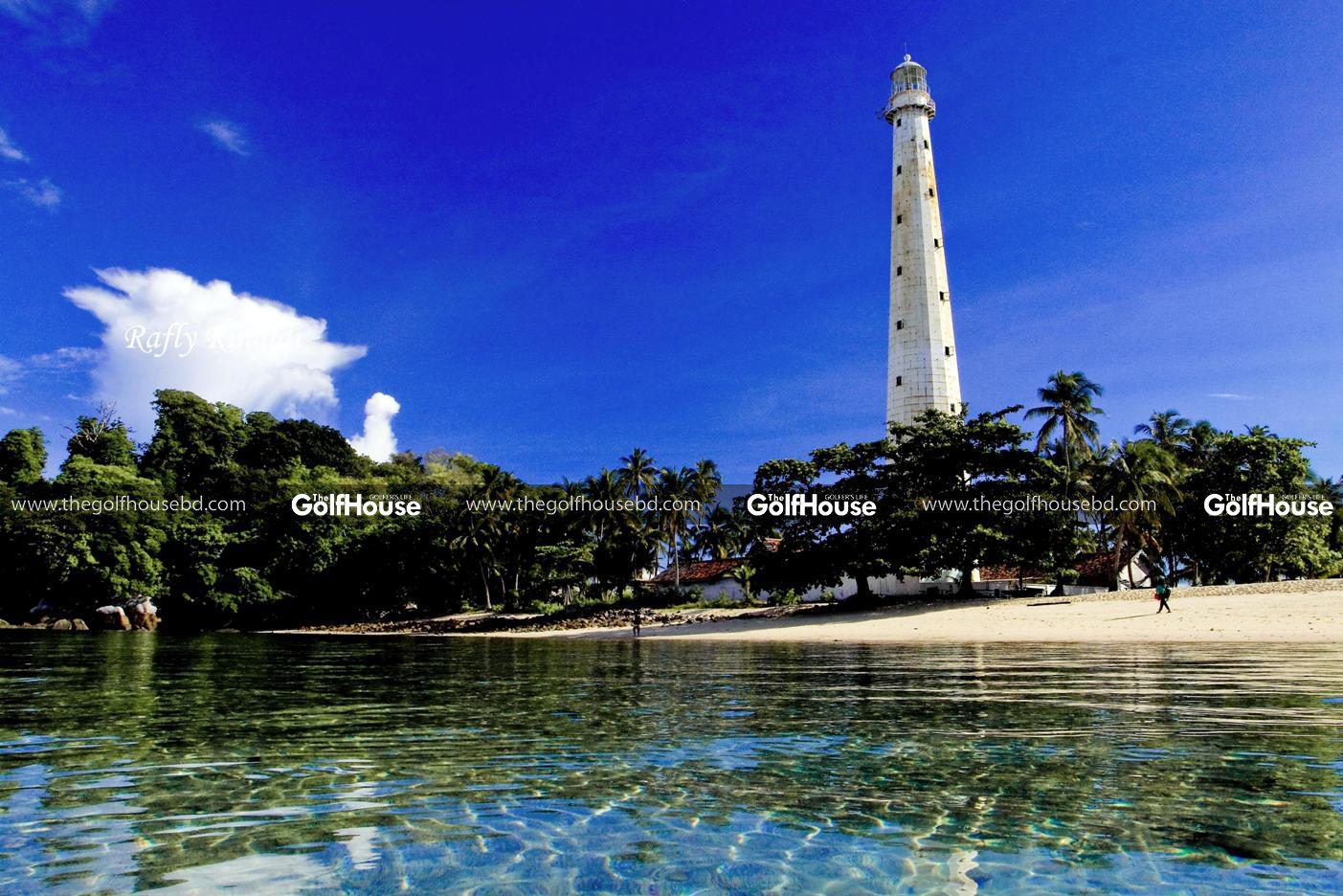
A part of the connection between China, and other parts of
Southeast Asia, of course, was the spread, across the region, of Buddhism, a spread of faith that predated the later spread, almost
certainly, also by merchants of Islam across a large part of the maritime nations.
The 1998 discovery, off the Indonesian island of Belitung in the Java Sea, opens new windows in the study of international maritime trade in the first half of the ninth century CE/AD.
Its significance, as far as the lands around the Ganges delta, now Bangladesh, is concerned, is the way it revises knowledge about such trade — trade that certainly included at least a thousand-year-old centre of international trade in that delta.
The route of such trade was, by then, already the well-developed Maritime Silk Road. This, recognised by Chinese archaeologists and historians as one of the earliest of these now famous trade routes, probably originated no later than the period of the Han Emperors of 3rd century BCE. It was, unsurprisingly, a “coast-hugging” route.
Rather than making any attempt to hazard across the Bay of Bengal, the course made for the Ganges delta, Sri Lanka, and the Indus delta as major ports of call, en route for ports in the Gulf, especially, perhaps, Oman. From the gulf, of course, routes reached west, to the Red Sea and Egypt, and along the East African coast.

The wreck was of an Arab dhow, similar in size and construction to such vessels still being built and operated in the Gulf ports. Around 18 metres in length, and about 6.5 metres in width, with one or sometimes two masts, rigged with lateen sails.
Quite why this particular craft was wrecked off Belitung Island is unclear, the route it was apparently sailing was south of that usually taken, with ports of call in Vietnam, Cambodia, and Malaysia, as well as the main Indonesian islands, in all of which the embryonic settlements of Arab, by then, mostly Muslim merchants, were already developing.
The location of a port, known as “Srivijaya,” believed to be in today’s Indonesia, has still not been firmly located and identified, but certainly acted as a major entrepot in South-East Asia, much as the Ganges delta served that purpose in South Asia.
It may well be that the small portion of the cargo, that comprised artefacts of gold and silver, justified an attempt to risk a direct voyage to its home port, avoiding the piracy that certainly bedevilled more coastal waters.
However, it is the totality of the cargo that has surprised archaeologists, and facilitated reappraisal of trading practices of the period.
……………………………………………………………………………………………………………….
Also read: A RESORT BUILT WITH A COMMUNITY-BASED APPROACH
……………………………………………………………………………………………………………….
Dr John Guy, curator at New York’s Metropolitan Museum of Art, neatly summarises the historiography of the wreck. He points out that by the ninth century, Chinese rulers encouraged the use of the maritime trade routes because the overland Silk Road was insecure, and liable to disruption.
In fact, that had always been true of the overland routes, and, in the ensuing centuries, became even more so — not least when, in the 12th century, the Mongol hordes ravaged most of Asia. Historians have long neglected the logic of the “water was the highway of the ancient world” maxim, and its implications for Indian and Chinese trade with each other, and a wider world.
A part of the connection between China, and other parts of Southeast Asia, of course, was the spread, across the region, of Buddhism, a spread of faith that predated the later spread, almost certainly, also by merchants of Islam across a large part of the maritime nations.
Whilst, with embryonic aids to navigation, the early Han use of internal rivers for both local, and, with convenient Himalayan region linkages to the south of Asia, and coastal waters, such international trade began to develop, it would be some centuries before the Maritime Silk Road became more fully developed.
Indeed, charting the early 15th century voyages of Admiral Zheng He, reveals that the Ganges delta was not only visited three or four times by him, but was, in fact, the only point of visit on the east coast of the subcontinent. From that, the continuing importance of the delta to China may be easily judged.
The route of such trade was, by then, already the well-developed Maritime Silk Road. This, recognised by Chinese archaeologists and historians as one of the earliest of these now famous trade routes
However, the Belitung cargo provides us with a very clear picture of trade in those early decades of the ninth century.
The cargo comprised, for the most part, of ceramics, with origins from many Chinese locations.
It is a piece of the large cargo of pottery of the late Tang dynasty, that includes a piece of Changsha pottery, bearing a date of manufacturing mark, that gives us a fairly precise dating for the wreck.
It is, naturally, the fascinating small cargo of extraordinarily well-made artefacts in precious metal that has attracted particular attention, worldwide. It comprises the largest such cargo of such artefacts of that period, so far recovered.
There is no doubting the Arab origin of the vessel, both in style, and building techniques, although the East African origin of its timbers also helps to describe this extraordinary network of trade. Through ensuing centuries, Bangladesh, of course, is also known to have become a source of both timber and building, for such Middle-Eastern merchants and traders.
The Chinese-based communities engaged in the industrial surge, and consequential trading, of the Tang dynasty is also known to have housed merchants and traders from a wide diversity of origin; including from Persia, Malayan Peninsular, Indian sub-continent, and Vietnam.
They also included Muslims, Hindus, and Christians, as well as the more ubiquitous Buddhists. Sadly, the history of such communities also records early anti immigrant violence, including at least two wholesale massacres — those who neglect their history are, surely, doomed to repeat it?
Interestingly, the Belitung wreck also reveals pottery with fake Arabic manufacturing marks; clearly, there were no enforceable, “country of origin” laws around the Gulf in the ninth century … perhaps any more than there are today.
What, of course, inhibits the ability of Bangladesh to take its natural, leading place in this rich history of thousands of years of international trade is, of course, the self-imposed constraint of international academia. “What is your reference,” a question not infrequently directed at me, almost, of course, suggests an end to history and its research.

If no “peer reviewed” publication has ever made a statement about revelations new to their world, such revelations are usually dismissed as lacking substance, and being academically unacceptable.
Bangladesh, with so many, “universities,” so many history “schools,” and, apparently, seems to have little original study to show for it.
The evident natural instincts of especially new nations, to refrain from asserting their history and heritage, combined for an increasingly unfortunate disregard for the study of history, means that, perhaps, Bangladesh’s central role in the development of international trade, with its potential for significant inbound tourism, will never be realised.
A pity, the keys are all around, and continue to become revealed, but, somehow, no one seems anxious to put it in a lock, and turn it. Leaving it, rather, to the nations around, including Pakistan, who did so much to destroy the wealth of tangible evidence, and India who have no interest in sharing a history with many of its roots in Bangladesh.
But then, Western archaeology, before the end of the Western dominated colonial period, had scarcely emerged in these ancient lands around the Ganges delta, and Bangladesh has lacked both resources, and, apparently the will to unearth what is, unquestionably, the heritage to which so much more valuable international tourism is attracted.
Tim Steel is a communications, marketing and tourism consultant.

BEAUTY OF
CHAR KUKRI MUKRI
Chor Kukri Mukri is the natural beauty that rises on the chest of Bhola. It is called Dip Kanya also. Nature lover tourists loves its surrounding beauty of ManGrove Forestry, Wildlife and Oceans. This island is familiar to everyone cause of its natural beauty. It is a guess that the island is four to five hundred years old and not so highly modernized.
Location:
Char Kukri-Mukri Island is in southern Charfession Upazilla under Bola District.
How To Go:
From Bhola town, Char Kukri Mukri is 2.5 hours by road towards the Char, then take 30 minutes boat ride on local craft.
Accommodation:
Circuit/guest houses are available in Bhola but More comfortable accommodations
are available at Barisal.
Things To Do:
The adventure of this island is Jungle Safari. You can plan adventure holiday to Char Kukri-Mukri Wildlife Sanctuary armed with information and reviews provided by experts and by users.
Eating Facilities:
There are a few restaurants along side, most serving Bangladeshi standards. But
expectations regarding food should not be high.














